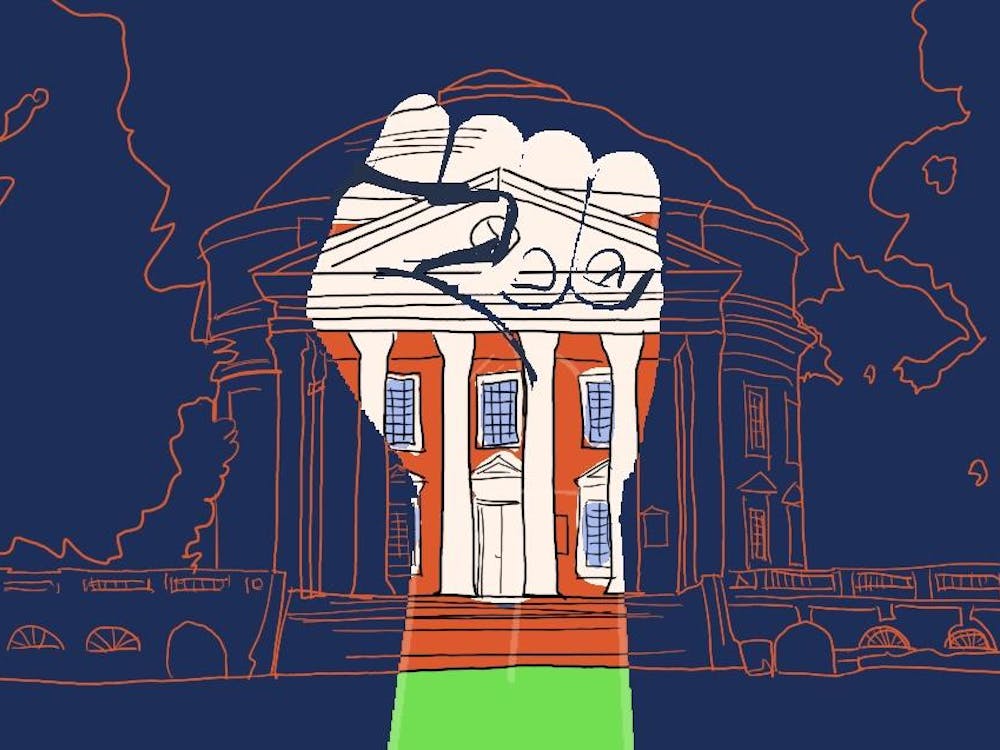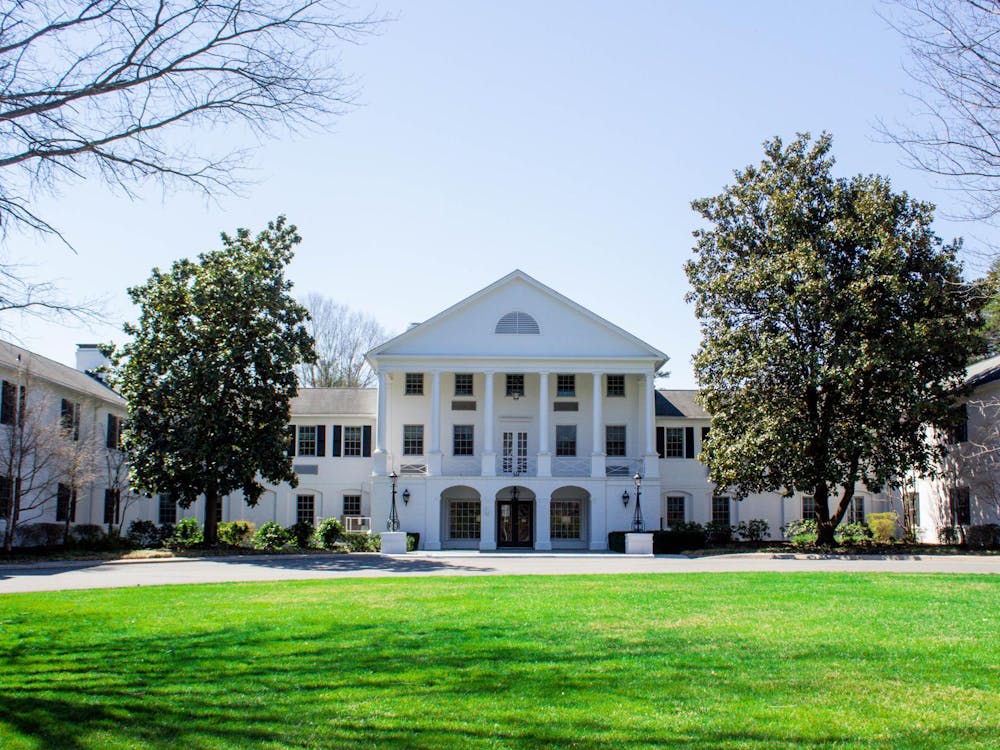FOR CENTURIES, underpaid, rarely celebrated, but nevertheless highly trained architects have tended to wealthy and powerful laypersons. For about the same time, these experts have pined for more say in how our communities look and feel. Frank Lloyd Wright argued that cities should be governed by architects. And Thomas Jefferson exchanged a lifetime of political capital to squeeze an extravagant Academical Village through the General Assembly.
Now, about half of the professors of the Architecture School have accused the Board of Visitors of both unfairly excluding "creative and recognized professionals" from the on-Grounds design process and -- perhaps worse -- having boring taste. Both criticisms express some truth. But the real questions are whether those are bad things, and what do we do now that the buildings are built?
The University is a public institution, and therefore must have open bids for new building designs. No design-building team is excluded per se, but because the Board often resolves that new structures must retain the trappings of Jefferson's architecture, today's most stylistically inventive architects opt out. Indeed, it would be rare to see any of today's celebrated architects jury-rig white porticos -- to many, embarrassing symbols of Antebellum plantations -- to any structure intended for a new century of pluralism and opportunity.
The end result of the Board's Palladian predilection -- and the gist of the professors' complaint -- is that the modern, engaging and eclectic works of our Architecture faculty and like-minded contemporaries have never taken root near the Lawn. Instead, the Board has brought us yet more halls by Hartman-Cox, builder of reserved, historic-looking buildings for reserved, historic towns.
But to be fair, there's sense to the Board's approach. Just because today's administration is less adventurous with patrons' money and the Jeffersonian legacy than Jefferson himself, it at least hasn't spoiled the gem the Sage of Monticello left us by inviting garish or trendy neighbors. Just as we shouldn't expect a quaint and confined Venice to host an explosive Frank Gehry work, we should refrain from using the locale of our historic Academical Village as testing grounds for the latest battery of architectural innovations.
The University is one of the few places where, as the professors call it, "apologetic neo-Jeffersonian appliqué" communicates meanings that are more than skin-deep. No matter how anachronistic and blasé it may appear to the sophisticate, the iconic brick walls, half-round windows and Chinese Chippendale lattices reiterated in recent projects still awaken warmth and idealism within common Virginian hearts. And for a place that ceaselessly debates its academic traditions, that prizes and criticizes its Southern heritage and that feeds the conservative halls of law, business and government, classical, reminiscent designs may best embody our community values.
Although the exigencies of "fund-raising, marketing, and branding" can never by themselves define good taste, in this world we must recognize that a state- and alumni-funded university must make compromises to remain competitive. To the critic, the Special Collections Library is a mere knock-off of some McKim, Mead and White masterpiece. But to the Development Office it may be the best means for loosening the pocketbooks of generations of diverse, diffuse alumni in order to grow the University's physical plant.
Thankfully, just because our most prominent, centrally located buildings can't -- and probably shouldn't -- be the subjects of cutting-edge design, that doesn't mean today's best architects can't leave a 21st-century impression on other corners of the University. The University is poised to keep growing in students and research capacity, and there remain swaths of our community that beg for the intervention of forward-looking planners and architects. Distanced visually from the sensitive Palladian motif of Central Grounds, these areas could host an array of more contemporary designs.
On Grounds, facilities that are already separated from our nostalgic Lawn district should remain open to imaginative design. There's no reason, too, why construction of our research parks and centers couldn't revisit Jefferson's adventure of building a self-contained academy in the idyllic Albemarle pastureland.
The greatest immediate opportunity for cultivating progressive architecture at the University, however, may be off Grounds. Following zoning changes in the Venable and Jefferson Park Avenue neighborhoods, developers are scrambling to exploit a burgeoning off-Grounds student population. With greater backing from the University and its land-holding U.Va. Foundation, Charlottesville planners and architects could better protect historic properties while inventing more sustainable, affordable and attractive residential areas.
So long as the University community expands, new opportunities for architectural expression will arise. Outside the shadow of Jefferson's architectural wonder, we all should be excited by what pioneering design will next arise in the Piedmont.
John Clark is a third year in the Law School. He is a former editor-in-chief of The Cavalier Daily.






